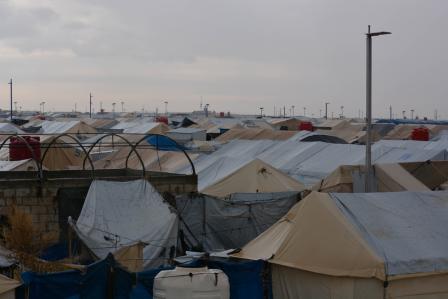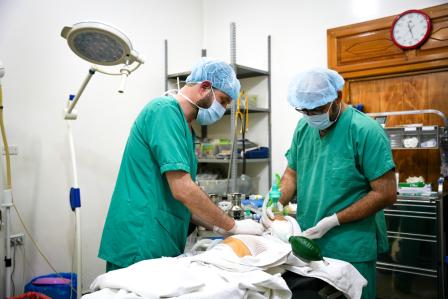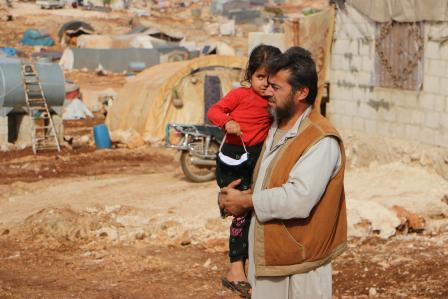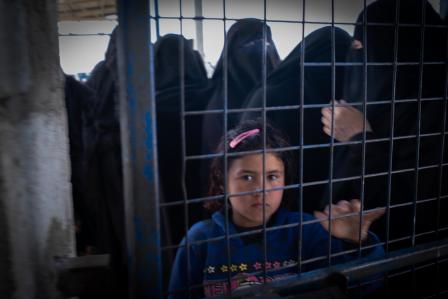Syria: A lost generation live in danger and desperation in Al-Hol camp
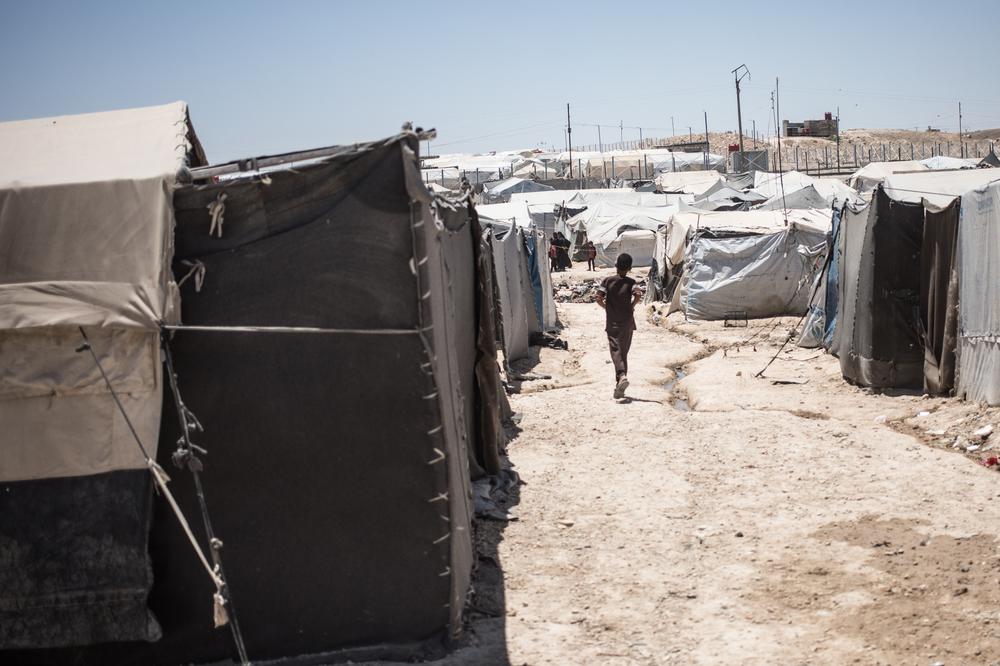
A child runs through the streets of Al Hol camp in northeastern Syria, where ISIS-affiliated families are gathered, in difficult living conditions. Syria, 2022. © Florent Vergnes
The deaths of two boys while awaiting approval for emergency medical care are just two of many tragic cases featured in a new report by Doctors Without Borders / Médecins Sans Frontières (MSF) that lays bare the cruelty of the long-term detainment of more than 50,000 people, the majority of whom are children, in Al-Hol, northeast Syria. Their stories, and others, have been documented in “Between two fires: danger and desperation in Syria’s Al-Hol camp."
In February 2021, a seven-year-old boy was rushed to Doctors Without Borders' clinic in Al-Hol with second-degree burns across his face and arms. Lifesaving medical care was no more than an hour's drive away, yet it took two days for his transfer to be approved by camp authorities. He died on the way to the hospital under armed guard, separated from his mother, in agony.
Just a few months later, in May of the same year, a five-year-old boy was hit by a truck and rushed to the same small clinic. Doctors Without Borders staff recommended he be referred to the hospital for emergency surgery. Despite the urgency, it took hours for his transfer to be approved. He died en route to the hospital, unconscious and alone.
Inside Al-Hol camp, northeastern Syria
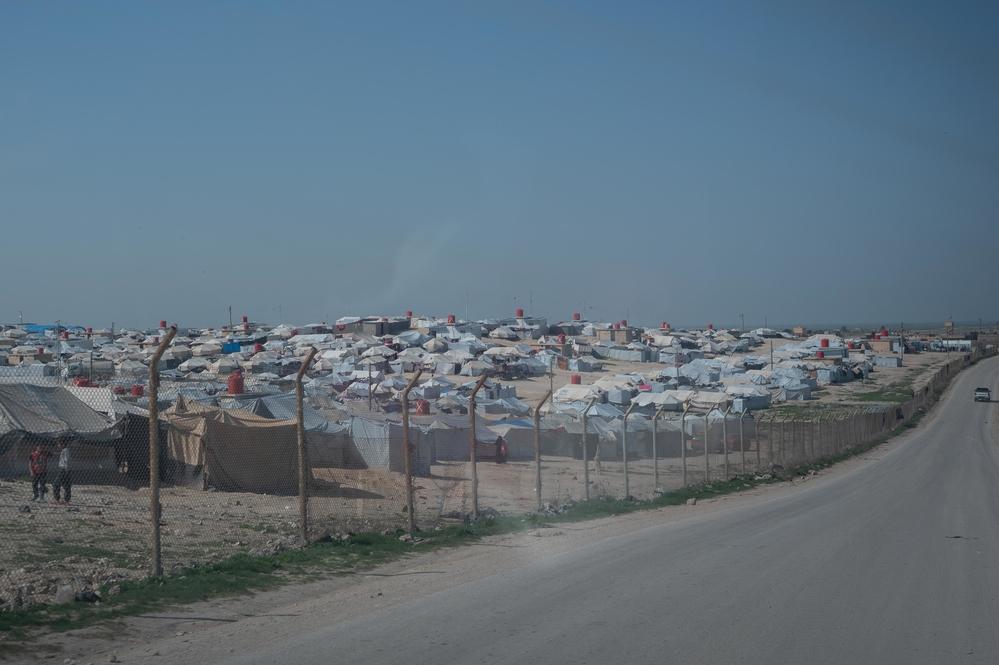
Large View of Al-Hol Camp, Eastern Al- Hasakah Governorate, Northeastern Syria. © Syria, 2020. MSF
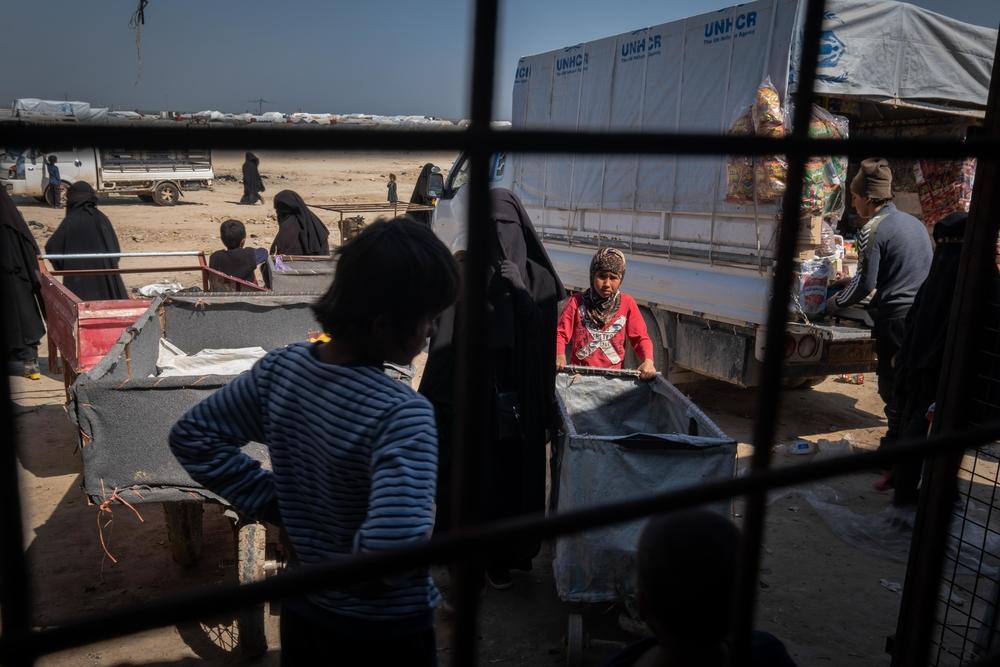
Inside Al Hol Camp, Eastern Al-Hasakah Governorate, Northeastern Syria. Syria, 2020. © Ricardo Garcia Vilanova
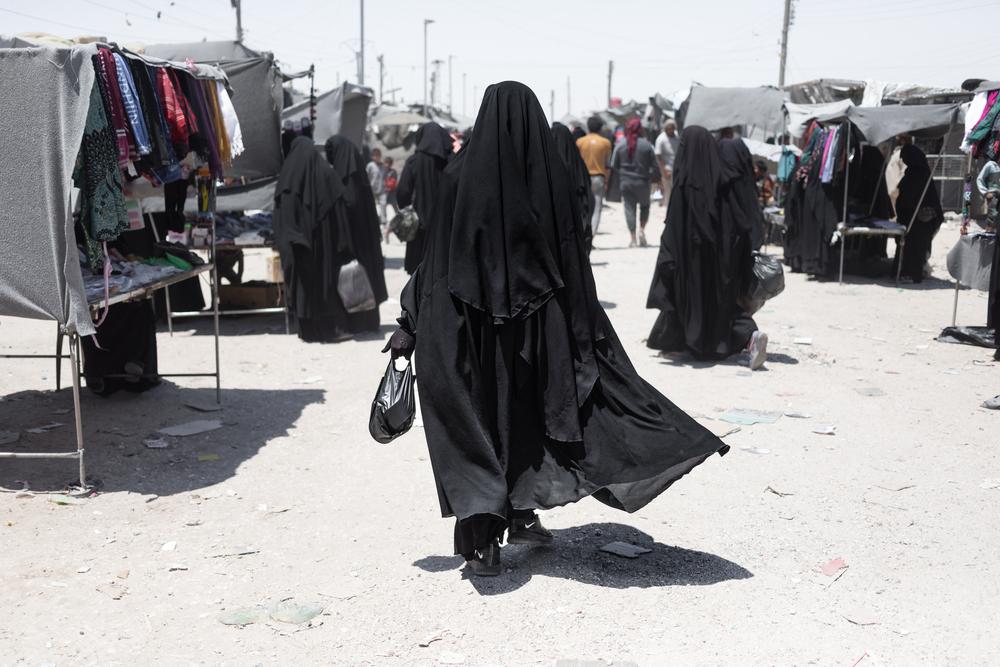
A woman in the market of the Al Hol camp in northeastern Syria, where families affiliated with the Islamic State are gathered in difficult living conditions. Syria, 2022. © Florent Vergnes
These are just two of the 79 kids who died in Al-Hol detention camp in Syria last year. In 2021, 35% of those who died in Al-Hol camp were children under the age of 16.
“We have seen and heard many tragic stories in Al-Hol detention camp in Syria, including children dying as a result of prolonged delays in accessing urgent medical care, and young boys reportedly forcibly removed from their mothers once they reach around 11 years old, never to be seen again,” says Martine Flokstra, Doctors Without Borders Syria Operations Manager.
For children and their caregivers in Al-Hol, if they can access medical care, it is often a terrifying ordeal. Children who require treatment at the main hospital about an hour's drive away from the camp are escorted under armed guard, and in most cases without their caregivers, as they are rarely given approval to go with their children. Al-Hol is effectively a massive outdoor prison, and the majority are children, many of whom have been born there, robbed of their childhoods, and condemned to a life exposed to violence and exploitation, with no education, limited medical support and no hope in sight.Martine Flokstra, Operations Manager
The camp was once designed to provide safe, temporary accommodation and humanitarian services to civilians displaced by the conflict in Syria and Iraq. However, the nature and purpose of Al-Hol has long deviated and grown increasingly into an unsafe and unsanitary open-air prison after people were moved there from Islamic State (IS) controlled territories in December 2018.
“Members of the Global Coalition against IS, as well as other countries whose nationals remain held in Al-Hol and other detention facilities and camps in Northeast Syria, have failed their citizens," says Martine Flokstra.
- Five facts about Al-Hol camp, northeast Syria
- In 2021, 35% of people who died in Al-Hol camp were children under the age of 16 years. This includes children who died after being hit by water trucks, fell in puddles of dirty water and were killed through violence. Alongside the dangerous nature of the detention camp, there are many reports of boys entering their teenage years being forcibly separated from their mothers or caregivers in ‘the Annex’. There is little or no information on where they are taken or what happens to them next.
- A total of 64% of Al-Hol’s population are children, while 50% of the camp’s population are under the age of 12.
- The leading cause of mortality in Al-Hol was crime-related death, which accounted for 38% of all deaths in the camp. In addition to those 85 crime-related deaths, 30 attempted murders were also reported in the camp
- Al Hol is now affectively an outdoor prison, where people have been stripped of their rights and exposed to violence and insecurity, the majority being children who’ve done nothing to deserve the fate that has befallen them. It is thought that there are close to 60 countries who have citizens in Al-Hol and other related detention camps in Syria (Roj), including the UK, Australia, China, Spain, France, Switzerland, Tajikistan, Turkey, Sweden and Malaysia. Following some returns and repatriations, the total camp population now stands at around 53,000, of whom around 11,000 are foreign nationals, housed in a sectioned off part of the camp call ‘The Annex’.
- Since October 2020, of the around 53,000 people detained, more than 1,300 Syrian families have left Al-Hol camp for their areas of origin, but waiting lists are long and the process for getting permission to leave is opaque. While as of August 2022, approximately 3,000 Iraqis were repatriated back to Iraq.
“They must take responsibility and identify alternative solutions for the people detained in the camp. Instead, they have delayed or simply refused to repatriate their citizens, in some cases going as far as to strip them of their citizenship, rendering them stateless," she continues.
“Despite the violent and unsafe conditions in Al-Hol, and more than three years after more than 50,000 people were moved there, insufficient progress is being made to close the camp. There are still no long-term alternatives to end this arbitrary and indefinite detention. The longer people are kept in Al-Hol, the worse it gets, leaving a new generation vulnerable to exploitation and without any prospect of a childhood free from violence,” she says.
Following 11 years of war, a record 14.6 million people need humanitarian assistance in Syria. It is the country with the largest number of internally displaced people (IDPs) in the world, with 6.9 million IDPs, most of whom are women and children. Many have been displaced repeatedly and live in precarious conditions. Doctors Without Borders operates in Syria where we can, but ongoing insecurity and access constraints continue to severely limit our ability to provide humanitarian assistance that matches the scale of the needs. Our repeated requests for permission to operate in areas controlled by the Syrian Government have not been granted. In areas where access could be negotiated, such as northwest and northeast Syria, we run and support hospitals and health centres, and we provide healthcare through mobile clinics.
